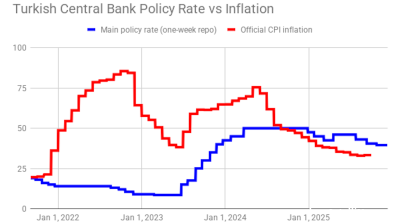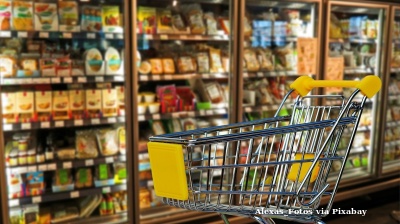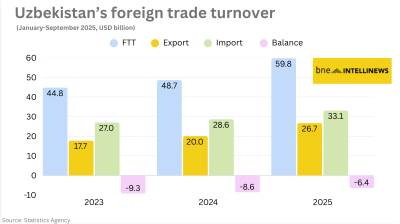The positive economic news keeps coming for Russia after the World Bank upgraded it from an "upper-middle-income" to a "high-income" country, putting it in the same group as the leading G7 nations, the bank said on July 1.
Bulgaria and Palau were also upgraded to “high-income” in the World Bank’s ranking.
Russia’s economy has defied expectations by outperforming all expectations following the imposition of harsh economic sanctions that have been offset by heavy spending on the military industrial complex.
“Economic activity in Russia was influenced by a large increase in military related activity in 2023, while growth was also boosted by a rebound in trade (+6.8%), the financial sector (+8.7%), and construction (+6.6%). These factors led to increases in both real (3.6%) and nominal (10.9%) GDP, and Russia’s Atlas GNI per capita grew by 11.2%,” the World Bank said.
The World Bank’s reclassification is based on the increase in the size of the economy based on its 2023 gross national income (GNI) per capita of $14,250, the World Bank said in a blog. Any country with a GNI per capita of more than $14,005 is considered to be a high-income country.
However, the World Bank noted that the increase in wealth is mostly due to the military Keynesianism boost that the Russian economy has enjoyed as a result of the war with Ukraine that broke out over two years ago. Incomes have also been artificially driven up by the chronic labour shortage that has pushed up nominal wages well above the rate of inflation.
Russia’s economy grew by an unexpected 3.6% last year making it the fastest growing major economy in the world, and is on course to grow again this year by at least 3%, according to the latest Central Bank of Russia (CBR) monthly macroeconomic forecast.
If sanctions were designed to collapse the Russian economy, they have been a failure and some have argued that the economy is now stronger than ever as a result of a fundamental change to Putinomics strategy from hoarding money to releasing massive amounts of pent up fixed investment. Some economists have argued that what started as a Keynesian bump is now transforming into a structural change in the nature of Russia’s economy thanks to the investment that will make growth stronger and more persistent in the medium-term.
Last month Russia also overtook Japan to become the world’s fourth largest economy in the world in PPP (purchase power parity) terms, according to World Bank data. Three of the world’s five largest economies are now BRICS members: China, US, India, Russia and Japan, in that order. Germany was fifth in the last ranking, but has now been pushed into sixth place. Both Japan and Germany are seeing their economies slow in PPP terms while most of the leading Global South countries are seeing their economies accelerate and rise up the income rankings in recent years.
The World Bank attributed Russia’s economic uplift to a significant increase in military-related activities and rebounds in trade, the financial sector, and construction.
Despite the challenges posed by international sanctions and ongoing geopolitical tensions, these sectors have demonstrated resilience and contributed to the country's economic performance, the World Bank reported.
Ukraine also had an upgrade to "lower-middle-income" to an "upper-middle-income" country, after its GNI per capita rose to $5,070 in 2023. Like Russia, Ukraine was lifted by heavy military spending that has largely been funded by international financial aid – money that Ukraine did not have access to before the war broke out. Since the start of the conflict Ukraine has received some $86bn from donors, equivalent to about two thirds of the value of the pre-war economy.
The World Bank Group assigns the world’s economies to four income groups: low, lower-middle, upper-middle, and high. The classifications are updated each year on July 1, based on the GNI per capita of the previous calendar year. GNI measures are expressed in dollars.
The classification of countries into income categories has evolved significantly over the period since the late 1980s. In 1987, 30% of reporting countries were classified as low-income and 25% as high-income countries. Jumping to 2023, these overall ratios have shifted down to 12% in the low-income category and up to 40% in the high-income category.
The scale and direction of these shifts, however, varies a great deal between world regions. The World Bank profiled some of the notable changes in its blog:
· 100% of South Asian countries were classified as low-income countries in 1987, whereas this share has fallen to just 13% in 2023.
· In the Middle East and North Africa there is a higher share of low-income countries in 2023 (10%) than in 1987, when no countries were classified to this category.
· In Latin America and the Caribbean, the share of high-income countries has climbed from 9% in 1987 to 44% in 2023.
· Europe and Central Asia have a slightly lower share of high-income countries in 2023 (69%) than it did in 1987 (71%).

World bank changes in income categories in FY25

Russia’s GNI per capita, Atlas method in current USD 1991-2023
Data

Turkey's central bank remains cautious, delivers 100bp rate cut
Decision comes on eve of next hearing in trial that could dislodge leadership of opposition CHP party.

Polish retail sales return to solid growth in September
Polish retail sales grew 6.4% year on year in constant prices in September, picking up from a 3.1% y/y rise in August, the statistics office GUS said.

Uzbekistan’s nine-month foreign trade nears $60bn
Export growth of 33% and import expansion of 16% y/y produce $6.4bn deficit.

Hungary’s central bank leaves rates unchanged
National Bank of Hungary expects inflation to fall back into the tolerance band by early 2026, with the 3% target sustainably achievable in early 2027 under the current strict policy settings.




